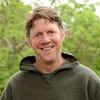Cheatery, truthiness and adulteration remain a significant problem among botanicals in the natural products industry. Heartbreak can’t be far behind.

Yes, the New York attorney general’s action against major mainstream retailers GNC, Target, Walgreens and Walmart will cost those companies—and the botanical brands sold there—millions from recalls.
And yes, it’s a cheap shot—even for the New York Times, which broke the story—because the DNA barcode technology used to assay the botanicals is known to be ineffective for botanical extracts because extracts are designed to eliminate the source material and its DNA.
But even though Wild Bill Hickok was unfairly shot in the back in the Old West, Wild Bill still deserved to die.
Which is to say, cheatery, truthiness and adulteration remain a significant problem among botanicals in the natural products industry. Heartbreak can’t be far behind.
Just how widespread is the problem? And is it as bad as the New York attorney general’s office asserts—with 38 percent of products it measured containing no DNA at all and pills filled with “cheap fillers” like powdered rice?
The propensity for adulteration of ginkgo is “extremely high”—as high as 60 percent to 70 percent of products on shelves, according to Roy Upton, executive director of the Americn Herbal Pharmacopoeia, which has produced dozens of monographs with appropriate testing methodologies to use for a range of botanicals.
Upton said St. John’s wort is adulterated perhaps 40 percent of the time and ginseng 60 percent because of cost.
“With saw palmetto, it depends on when it was made,” said Upton. “Last year was a lean year harvest so we predicted adulteration for this year. There’s up to 60 percent or 70 percent potential for adulteration.
“The are only a handful of people you can trust—the Indenas, EuroMeds, OptiPures,” said Upton. “They are selling high-quality extracts at a price three times higher than the Chinese material. You talk to anybody at those companies and they’ll tell you they have a hard time selling against one-third the price of material.”
Upton said that, for sure, the DNA barcode testing protocol used by the New York state attorney general’s office is “not appropriate.” He also noted that the powdered rice maligned in the report is a known flow agent to ensure herb powders move through grinding machines and easily get into their capsules. He also said that “foreign matter” said to be contaminating the supplements are “totally allowed according to national and international standards.”
“It’s also not really fair to claim adulteration unless you claim adulteration in your particular study rather than just saying that we know adulteration problems exist,” he said. “It’s common knowledge that adulteration can and does exist for even some of these botanicals; however, the testing methodologies used in the study do not prove this.”
What is the industry to do?
There are really three categories of players in the U.S. botanicals industry. There is the well-funded, high-minded responsible core of the industry, with sophisticated quality-control resources allocated to vouchsafe ingredient quality, such as the ingredient suppliers Upton listed above. There are of course the “bad apples” that everyone likes to throw under the bus—if only the responsible industry players were brave enough and nimble enough to name names to regulatory bodies and attorneys general. And there is the great unwashed middle players—those who want to do the right thing, those who would prefer to not have contaminated or adulterated products in their offerings but who suffer from two problems—not knowing the right questions to ask of analytical labs to ensure product quality and always deferring to price in making business decisions.
“There’s a sense among many in the industry that this is a growing phenomenon, especially the economically motivated adulteration,” said Mark Blumenthal, founder and executive director of the American Botanical Council (ABC).
The ABC has partnered with the American Herbal Pharmacopoeia (AHP) and the University of Mississippi’s National Center for Natural Products Research to offer the industry free information on known adulterants through the Botanical Adulterants Program.
“It’s naïve to think we’ll eliminate the problem, but we can hope to reduce it,” said Blumenthal.
He said ABC is beginning to issue bulletins on known adulterants based on scientific reports and regulatory actions that detail known adulterants.
Getting hip to be a savvy botanical brand holder requires knowing what adulterants are being used to circumvent tests on the market.
“This is where the conversation has to get more sophisticated,” said Upton. “Everyone wants to pretend everything is pure all the time, and it’s not. No one test method is best—it depends on what you’re trying to find out. That’s the flaw in studies like this one.”
He said for identification purposes of an extract, labs should use either HPTLC or HPLC fingerprinting. For quality assessment to meet label claim of constituents it depends on the product but DNA is not an appropriatelv testing methodology. For ginkgo, use one of the pharmacopoeial methods to determine if product matches the 24 percent flavonol glycosides and 6 percent triterpenes and is also not spiked with either rutin, quercetin or sophora. St. John's wort tends to be adulterated with a dye that fools the UV spectrophotometric method typically used. Saw palmetto needs a GC method for testing specific ratios of fatty acids.
“If you’re a QC person or a purchasing agent and have a 24/6 ginkgo and somebody says we want to send it to a lab, that person will shop price,” said Upton. “One lab says they’ll do an HPLC for $100, another says $250. But the more expensive testing lab may know about adulteration problems. Others may ask what do you want to test. They may say we want a 24/6 test and they’ll run whatever test they run. Unless they’re specifically asked to determine if there are adulterations—which will be three times more in cost—they’ll only get a 24/6 pass/fail test. If it passes, it doesn’t mean it wasn’t contaminated with sophora or rutin or quercetin. Does the purchasing agent know what to look for? You need a savvy QC guy to know what to look for, plus a savvy contract lab. Most of the industry doesn’t have that sophistication. We’ve been talking this talk for 15 years with aduleration, and it all seems to come down to price.”
“HPTLC is probably the best for testing raw materials and extracts because you can see adulterants and chemical fingerprints,” said Elan Sudberg, CEO of analytical lab Alkemist Labs. “Some products are called extracts that are not—this goes back to QC. People don’t specify that they want a ginkgo extract, they specify ginkgo at this price point and they get what they get. This is a big hit to the industry. I’m expecting to see a wave of tests.”
For additional information on quality, testing and validation of ingredients, check out some of the industry guidance available from Engredea here.
About the Author(s)
You May Also Like




